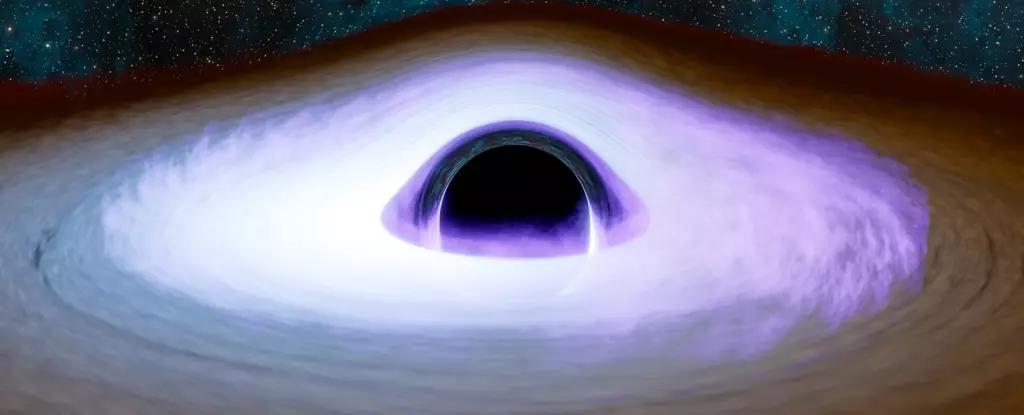Astrophysics continually challenges our understanding of the universe, delving into the enigmatic realms of celestial phenomena that shape our cosmos. One of the most compelling topics of research is the coronal region surrounding black holes, akin to the Sun’s corona but vastly more mysterious. An insightful study recently published in The Astrophysical Journal opens a window into these elusive regions, shedding light on their properties and implications for our understanding of active galactic nuclei (AGNs).
The Corona: More Than Just a Halo of Light
To comprehend the significance of a black hole’s corona, we must first take a step back to appreciate what a corona is in astronomical terms. When observing a total solar eclipse, the bright halo encircling the Moon is the corona of the Sun, the outer atmosphere that exists at extremely high temperatures—millions of degrees—despite being almost a vacuum. This observation becomes pivotal when we shift focus to black holes, where theoretical models suggest that these cosmic giants should also possess coronas. However, unlike the Sun’s accessible corona, the black hole’s corona has proven elusive to direct observation, prompting continued exploration by astronomers.
Current astrophysical models propose that an active black hole is enveloped by a toroidal structure of gas and dust. This framework includes an accretion disk—where matter spirals at high velocity and reaches extremely high temperatures—and jets of ionized gases that shoot outwards at nearly the speed of light from the black hole’s polar regions. The intriguing aspect lies in the relationship between the orientation of the black hole and the accessibility of various structures—including the corona and accretion disk—to observers on Earth.
Two categories arise based on their visibility: obscured and unobscured black holes. When a black hole resides at a certain angle relative to an observer, the dust and gas torus can block the view of the accretion disk, rendering the black hole itself obscured. Much like an eclipsed Sun, when this occurs, we cannot directly observe the coronas—yet those conditions do not inhibit the scientific inquiry into their existence.
In a groundbreaking study, researchers turned to high-energy X-ray emissions to probe the coronas surrounding obscured black holes. While the corona’s faint light is often drowned out by the brighter light of the accretion disk, it’s essential to recognize that this high-energy region emits X-rays at staggering temperatures, potentially reaching billions of degrees. This is where the ingenuity of scientists makes a critical difference; by using scattered light phenomena, similar to how we observe the Sun’s corona during a total eclipse, astrophysicists could infer the presence of black hole coronas.
Employing NASA’s Imaging X-ray Polarimetry Explorer (IPXE) satellite, this research focused on a dozen obscured black holes, including significant exemplars such as Cygnus X-1 and X-3, along with LMG X-1 and X-3 in the Large Magellanic Cloud. The results were promising: researchers successfully captured scattered X-rays emanating from the coronas, suggesting a disk-like structure that parallels the accretion disk rather than a spherical shape akin to that of the Sun.
Implications for Astrophysical Understanding
The findings from this study not only enhance our observational repertoire but also challenge and refine existing models of black hole dynamics. By revealing the properties of the corona and noting its distinct configuration surrounding black holes, scientists bolster our grasp of how these celestial bodies consume matter and influence AGNs in other galaxies. Such research provides critical data allowing us to piece together the intricate puzzle that is our universe.
In a field defined by ongoing discovery, this study serves as a reminder of the vast unknowns that remain within the dynamic behaviors of black holes. Understanding the intricate relationships between black holes and their coronas could open doors to answers that address fundamental questions about the behavior of matter and energy in the cosmos. As astronomers continue to observe and investigate, each breakthrough enhances our knowledge, ultimately drawing us closer to deciphering the universe’s most perplexing enigmas.

